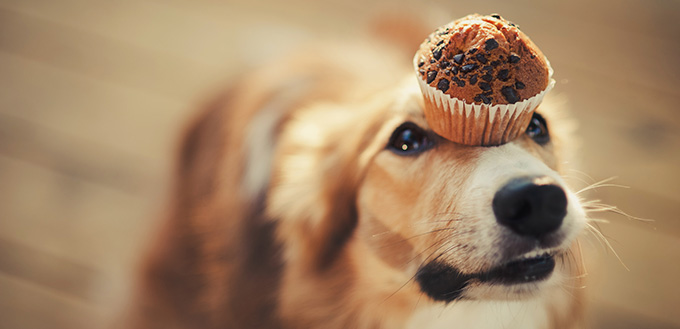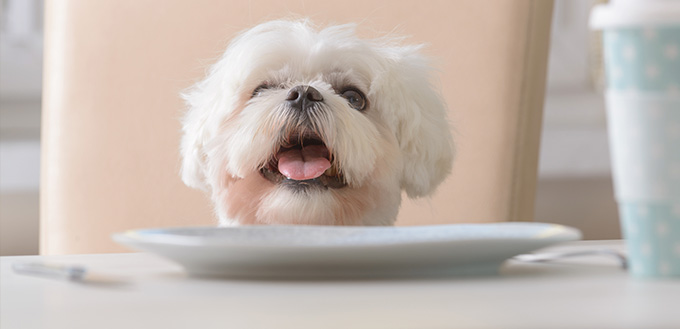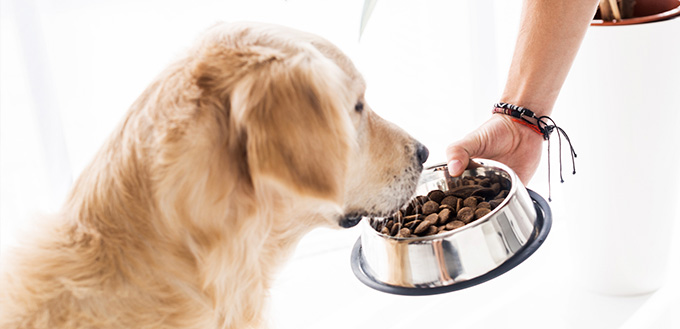If your dog is continually looking at you with those big puppy eyes pleading for food, you have to have enormous willpower to resist. How can you refuse that gorgeous face? Yet, if you keep giving in you could end up doing them more harm than good. A dog that takes too many calories on board can end up as obese and that comes with a lot of health problems. Just like humans that are overweight, they are at increased risk of diabetes and heart disease and their joints are under enormous strain.
Smart owners can tell the difference between genuine hunger and simple greed. Here’s how you can learn to tell the difference and how you can respond to constant nagging about food.

How To Tell If Your Dog is Genuinely Hungry
There’s nothing unusual about a dog that appears to be obsessed with food. This can be explained by their ancestry. In the wild, dogs would have led a ‘feast or famine’ type of existence. If any food was available, they ate it irrespective of whether they were hungry or not. This is because they never knew when their next meal would arrive. Of course, this type of behavior is not necessary for a domestic dog who has all their meals provided by their owner but old instincts can be hard to control and this leaves many owners complaining that “my dog is always hungry and thirsty”.
Luckily, there are plenty of ways in which you can tell the difference between genuine hunger and greedy nagging for food.
Determine Your Dog’s Correct Calorie Intake
Every dog has different dietary needs. The exact number of calories that your pooch needs per day will depend on their age, size, breed, and physical activity levels. Your vet will be able to help you work this out. Once your dog has received the number of calories that they need in a day, they do not need any more food! They also do not need any more treats. It helps if you divide the daily calories by half and feed them one meal in the morning and one in the evening.
The occasional treat is fine but they should not make up more than 10 % of their total calorie intake. Also, you need to subtract the calories in the treats from the total calorie intake and reduce their food portions accordingly. It is important that you are consistent and disciplined. Your vet can help by monitoring your dog’s weight and can provide reassurance that you are not starving your dog, even though your pooch may be acting as if you are!
If you are providing less than the recommended calorie intake or if they are losing weight, they are probably a genuinely hungry dog.
Related Post: Best Dog Food for Weight Loss
Be Consistent With Refusing Table Scraps
Begging at the table is a bad habit to encourage so nip it in the bud by refusing to offer table scraps. The whole family must join in with this. Soon, your pooch will lose interest and wander away.
However, if you never offer scraps from the table and your dog still insists on desperately begging for food, it indicates that they are probably a genuinely hungry dog.

Be Consistent with Offering Treats
You also need to be consistent with how you offer treats. You can reward your dog in other ways such as with plenty of love and attention, playing their favorite game or allowing them to play with a much-loved toy. If you are looking for more options, check out our guide on the best dog toys.
If you do use food as a reward or treat, make sure that you are consistent with the timing and never give one when they are actually begging. For example, you may offer one treat at lunchtime which is approximately halfway in between your dog’s set meals. You may want to offer one treat in the evening after a long walk. Your pooch will soon learn when to expect a treat and will not bother begging for them at other times. However, if the begging persists, it indicates that they are genuinely hungry.
Find out more about healthy dog treats and vegan dog treats here.
Monitor Their Level of Exercise
If your dog is now getting more exercise than they used to get, it is possible that they are no longer getting enough calories. Have you changed your walking route? Do you go on longer walks together when you are not at work? Have you started hiring a pet sitter or dog walker who is taking your dog out more? If this is a possibility, then your dog could genuinely need more food.
If you need help monitoring your dog’s daily activity, a dog activity tracker might come in handy.
Check If They Are Ill
Some conditions affecting the stomach and intestine make a dog feel hungrier than they used to. It is possible that your dog has developed problems with their pancreas, Cushing’s disease, or hyperthyroidism. Talk to your vet so that this can be investigated and treated.
Only Feed Them High-Quality Dog Food
Cheaper brands of dog food do not satisfy a dog’s hunger for very long. Soon after a meal, they feel hungry again and are on the lookout for food. Cheap fillers in some dog food formulations will add calories but are digested very quickly and offer little in the way of nutrition. Premium dog foods that contain plenty of protein and high-quality carbohydrates will keep your dog satisfied for longer.
Is your puppy still hungry after eating appropriate quantities of high-quality dog food? This is most likely to be begging behavior and you are perfectly within your rights to ignore them!

How to Stop Dogs Begging
Once you have satisfied yourself that your dog is not genuinely hungry, you will feel more confident about tackling the problem with their begging. Unfortunately, this can take some time. It also requires total commitment from everyone in the household. Here’s a sensible plan that you can follow.
- Feed your dog before you have your meal. You will then be able to settle down and eat knowing that your four-legged friend also has a full tummy. This stops you from feeling guilty and makes you less likely to feed them table scraps. Also, the smells and sight of your food will not be such an issue for your dog because they will have just eaten.
- Ignore begging. As soon as you give in to begging you are making the problem worse. You must consistently ignore it however desperate and annoying it becomes. Everyone in the house must do the same and that includes guests and anyone that looks after your dog.
- Separate your dog from your food. You can prevent your dog from becoming obsessed with your food by separating them from it. Use pens or stairgates to keep them out of the kitchen when food is being prepared. If you have completed crate-training, this is also an option. As a short-term solution, a tether tied to a piece of heavy furniture will do. That stops them from being able to grab any scraps of food that accidentally fall off work surfaces. Also, keep them out of the dining room when you are eating.
- Use verbal commands. If you would rather that your dog is close to you at meal times, you can use commands to get them to lie down or to go to their basket. This puts you back in control of the situation at meal times.
- Reward good behavior. When your pooch (eventually) makes it through a meal time without pawing and whining at you for food, reward them with a treat. That way, they will know that something good is waiting for them at the end of your meal if they behave well.
- Avoid boredom. Sometimes begging is a sign of boredom rather than hunger. Your dog is looking for attention and not food. You can get around this by having designated times when you play with your pooch. The rest of the time, they must learn to entertain themselves. You can get plenty of enrichment activities for them to play with such as puzzle toys. Also, make sure that you are taking them out of the house often enough so that they are getting plenty of physical exercise and mental stimulation.
So, if you are one of the many owners who complain that “my dog is always looking for food” it may turn out that you are partly to blame. It is much easier to stop begging from starting in the first place than to stop it once it has started. If begging behavior has already become established, it can take some time to eliminate it. You will need a lot of patience and you must be prepared to be consistent. Eventually, your pooch will get the message and you can enjoy your meal times in peace.
Related Post: Best Automatic Dog Feeders
Source:
- How to Know If Your Dog Is Hungry, Pets Web MD






